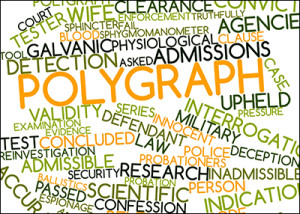Polygraph Testing: Is It Effective?
By Russ Warner, VP Marketing −
Polygraph tests, also referred to as lie detector exams, have been used for decades to determine the fate of individuals. Some employers require that prospective employees take the test to determine their eligibility for employment. Also, law enforcement officials use the exam to help decide the verdict of a case in progress.
Regardless of the reason behind requiring someone to submit to a polygraph test, the idea of being hooked up to a machine and answering questions under pressure can be a frightening experience.
What Does a Polygraph Exam Entail?
A polygraph is a device that monitors a person’s respiratory, cardiovascular and sweat gland activity. During the test, the examiner asks question and the computer determines if the examinee is telling the truth by the signals they put out In short, a polygraph measures a person’s emotional response to questioning.
To test for consistency in the answers, the examiner asks the same questions three times during the interrogation. Depending on how the examinee answers the questions, the lines on the chart will fluctuate accordingly. When the examinee states the truth, he is more relaxed and provides an answer that comes naturally, since he does not have to devise a response. However, if the examinee is lying, he has the stress of coming up with and remembering that answer, causing the chart to fluctuate more dramatically than if they were telling the truth.
Critics Doubt Results
Critics doubt the accuracy of polygraph tests, because the exam does not measure concealed knowledge, but rather an emotional response to questions.
Test anxiety can often create stress in an innocent person, causing rapid heartbeats or sweaty palms; in such cases, the credibility of the examinee is in jeopardy. In addition, deceptive individuals can learn effective countermeasures by remaining calm and collected, effectively fooling the examiner and cheating the exam.
Polygraph testing, although useful in event-specific interrogations, does have its flaws. Many judges will not use the test unless both sides of a case agree.
An emerging lie detection technology has the potential be much more accurate than the polygraph test. EyeDetect™ utilizes a series of true-false questions, but rather than monitoring heart rate, pulse, respiration and other bio-signals, it monitors eye behavior.
With an 85 percent average accuracy rate, EyeDetect may well replace the polygraph test completely in years to come.


